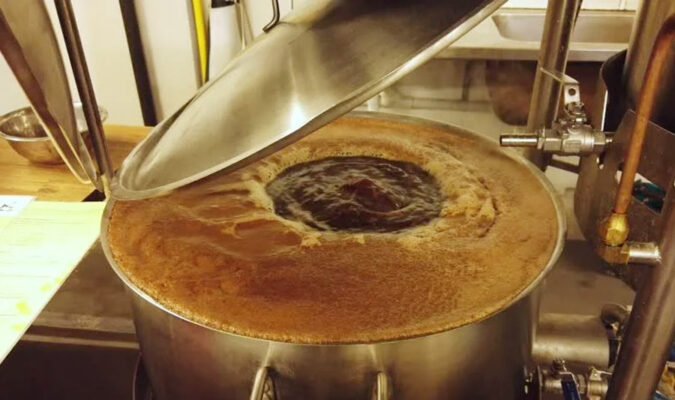One aspect of the brewing process that all brewers use is boiling the wort. Although wort boiling is not the most attractive part of the brewing process. But get the temperature right, add hops, add crumbles from the kettle. These are things to do. In short, boiling is almost universal and important. It affects many qualities of the beer we brew.
Wort
There are a lot of things that have to happen in the brewing process before we get to the fermentation stage, which is when beer becomes beer. It all starts with the wort, which gives the beer its basic flavors, including the grain and hop flavors desired by the brewer’s recipe.
Wort ingredients
Controlled germination of malted grains is initiated by adding water and stopped by removing water before the seedlings develop their seed cover. The malting process itself consists of three stages: steeping, malting, and firing. Other non-essential ingredients include carbohydrates.
Wort Boiling Variations
Disinfect
Although wort separation is usually performed at high temperatures (76-80°C), the wort entering the kettle contains a large number of microorganisms – yeasts, molds, and bacteria which can cause off-flavors and many other problems.
Enzyme inactivation
Boiling fixes the carbohydrate content of the wort by inactivating residual enzymes responsible for carbohydrate and protein degradation that may have survived mashing or sparging.
Protein precipitation
During boiling, it is necessary to reduce the content of high molecular weight nitrogen in the malt. Protein precipitation occurs when the wort loses turbidity during boiling, and as the proteins coagulate, the material comes out of suspension and settles out.
Color formation
During the boiling process, the wort will darken in color. This is caused by the formation of pigment (melanin), oxidation of polyphenols, and caramelization of sugars.
The melanoid-Maillard reaction occurs when reducing sugars in carbohydrates react with amino acids extracted from proteins during glycation.

Caramelization
Caramelization is a chemical process that affects sugars subjected to temperatures of 200°C or higher.
Isomerization
The main flavor contribution of hops in beer is the bitterness from iso-alpha acids. During the boiling process, the insoluble alpha acids extracted from the hops are converted to more soluble iso-alpha acids.
Add liquid excipients
Generally speaking, auxiliary materials such as rice and corn are usually added in solid form when feeding. Yet, for some beer recipes, it is an option to add liquid adjuncts to the boiler during the wort boil. Many other breweries use high proportions of liquid excipients.
Protein and Polyphenol Aggregation
Also with proteins, polyphenols are another type of compound. For winemaking, polyphenols and tannins are considered synonyms. Polyphenols have both positive and negative effects on beer. Some polyphenols are expected, as they contribute to the color, bitterness, and aroma of beer. Some polyphenols also act as antioxidants. But, we don’t usually expect these polyphenols to be present, since their reaction with proteins can lead to cold and cloudy beer. Polyphenols also contribute to the pungent, bitter taste of beer.
Flavor formation
The Maillard reaction that leads to color formation also affects the flavor of the beer. The smell of melanin produced by this reaction depends on the amino acid compound that reacts with the sugar. For example, when reacted with glucose, ammonia can produce a bitter taste, glycine can produce a burnt aroma of bread, and valine can produce a malty taste. Leucine produces the aroma of fresh bread, while phenylalanine produces the smell of withered roses. Aldehydes are also produced as intermediates in Maillard reactions. They have a strong flavor, but most of it is converted to melanin, which is “evaporated” or reduced during the fermentation stage. Any residual aldehydes from the brewing process will speed up the beer aging reaction.
Lower wort pH
As mentioned earlier, the pH of the wort begins to drop during mashing and continues to drop during the wort boil, reaching a pH between 5.2 and 5.3 (25).




